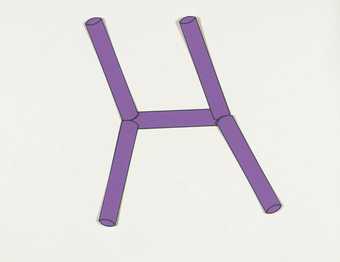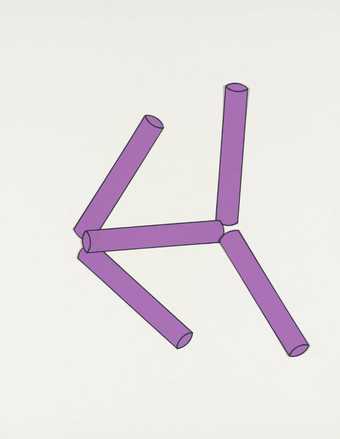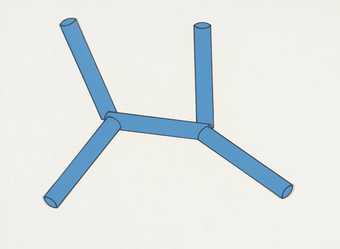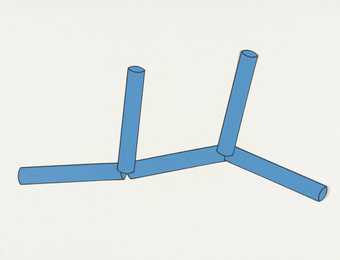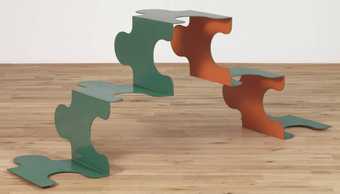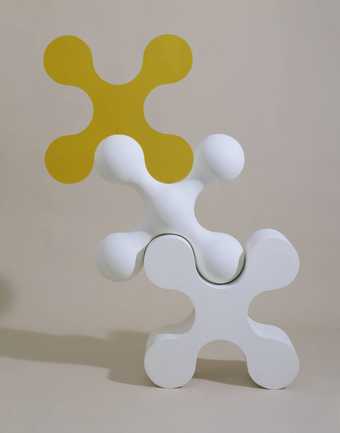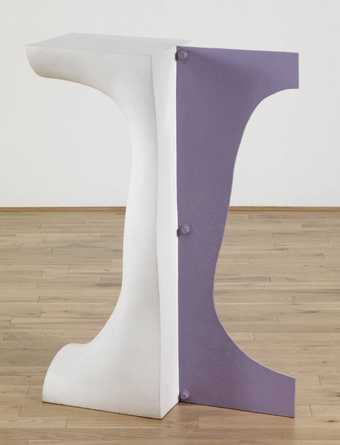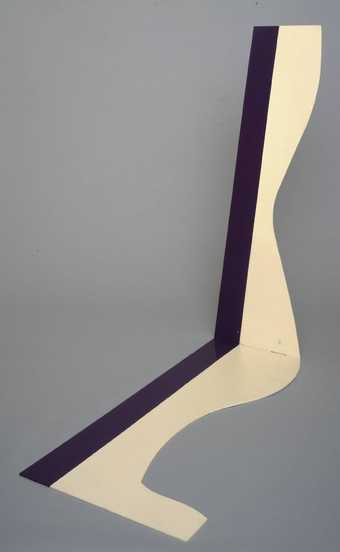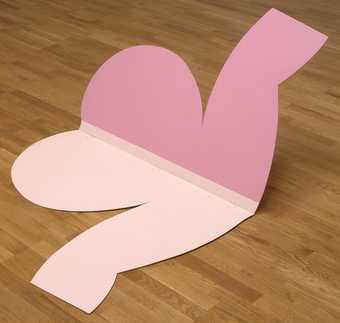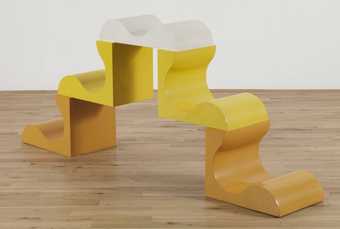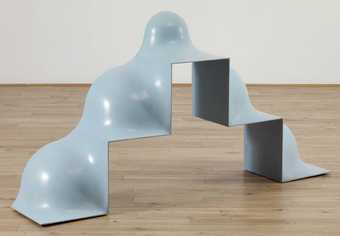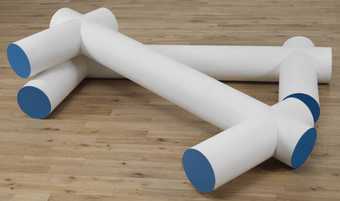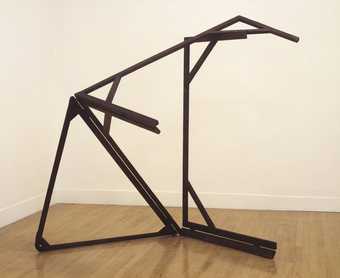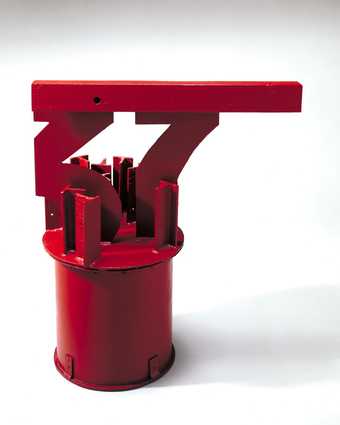
Not on display
- Artist
- William Tucker born 1935
- Medium
- Painted iron
- Dimensions
- Object: 1511 × 2661 × 1499 mm
- Collection
- Tate
- Acquisition
- Purchased 1973
- Reference
- T01818
Display caption
Gallery label, August 2004
Does this text contain inaccurate information or language that you feel we should improve or change? We would like to hear from you.
Catalogue entry
William Tucker b.1935
T01818 Beulah i 1971
Not inscribed.
Painted iron,59½ x 104¾ x 59 (151 x 266 x 150).
Purchased from the Waddington Galleries (Grant-in-Aid) 1973.
Coll: Kasmin Gallery; Waddington Galleries; Alistair McAlpine; Waddington Galleries.
Exh: XXXVI Biennale, Venice, June–October 1972 (British Pavilion, unnumbered, repr. in colour); William Tucker. John Walker. Plastiken. Bilder. Grafiken, Hamburg Kunstverein, January–February 1973 and Museum Bochum, March–April 1973 (7,repr.); Serpentine Gallery, October 1973 (unnumbered, repr. and in colour).
Lit: Andrew Forge, in Venice Biennale catalogue (and reprinted in Serpentine Gallery catalogue); William Tucker, ‘Sculpture and Architecture: an introduction to my recent work’ in Studio International, clxxxiii, June 1972, pp.241–3 (repr.).
T01818 is the first in a series of seven sculptures to date and was made in June and July 1971.
Published in The Tate Gallery Report 1972–1974, London 1975.
Explore
- abstraction(8,615)
-
- non-representational(6,161)
-
- irregular forms(2,007)
You might like
-
William Tucker [no title]
1969 -
William Tucker [no title]
1969 -
William Tucker [no title]
1969 -
William Tucker [no title]
1969 -
William Tucker [no title]
1969 -
William Tucker Meru I
1964 -
William Tucker Anabasis I
1964 -
William Tucker Margin I
1962 -
William Tucker Margin II
1963 -
William Tucker Unfold
1963 -
William Tucker Meru II
1964 -
William Tucker Meru III
1964 -
William Tucker Series A No. 1
1968–9 -
William Tucker Shuttler B
1970 -
William Tucker 37
1960

